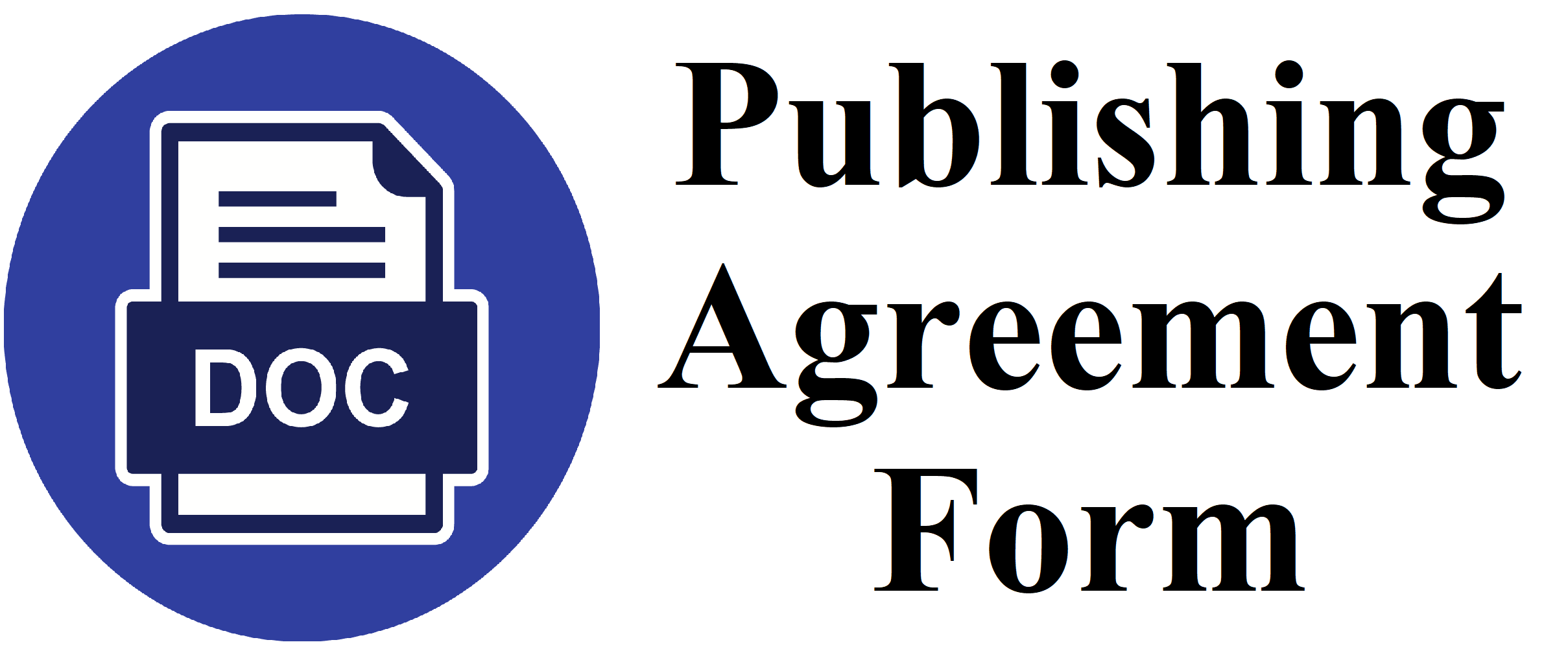The Effect of Curcuma longa Extract on Interleukin 6, Procalcitonin, Microbial Count, and Histopathology of the Lungs in a Rat Model Infected with Streptococcus pneumoniae
DOI:
https://doi.org/10.36497/jri.v45i2.460Keywords:
histopathology of the lungs, interleukin 6, microbial count, procalcitonin, Streptococcus pneumoniaeAbstract
Background: Streptococcus pneumoniae causes 95% of cases of community-acquired pneumonia (CAP). Interleukin 6, procalcitonin, microbial count, and lung histopathology can help in determining indicators of inflammatory processes and prognosis. Curcumin, which acts as an anti-inflammatory and anti-microbial, can be used as an adjunctive therapy in infectious diseases.
Methods: This was a laboratory experimental study. A sample of 30 white rats (Rattus norvegicus) infected with Streptococcus pneumoniae was carried out in the experimental animal laboratory at the Faculty of Medicine, Universitas Sebelas Maret in November 2022 with incidental sampling. The control group received 1cc of aquadest, the first treatment group received 30 mg/200 g of curcuma longa extract, the second treatment group received 50 mg/200 g of Curcuma longa extract, the third treatment group received 30 mg/200 g of Curcuma longa extract and 30 mg/200 g of amoxicillin, and the fourth treatment group received 30 mg/200 g of amoxicillin. Interleukin 6 and procalcitonin were measured on the third and twelfth days after the rats were infected with Streptococcus pneumoniae. The microbial count and histopathology of the lungs were assessed after the twelfth day.
Results: There was a significant difference (P<0.05) in the decrease in levels of interleukin 6, procalcitonin, and microbial count in the treatment group compared to the control group. There was no significant difference (P>0.05) in the improvement in the histopathology of the lungs in the treatment group compared to the control group.
Conclusion: Curcuma longa extract can significantly reduce levels of interleukin 6, procalcitonin, and microbial count, but not significantly improve the histopathology of the lung.
Downloads
References
1. Koul P, Chaudhari S, Chokhani R, Christopher D, Dhar R, Doshi K, et al. Pneumococcal disease burden from an Indian perspective: Need for its prevention in pulmonology practice. Lung India. 2019;36(3):216–25.
2. Cillóniz C, Cardozo C, García-Vidal C. Epidemiology, pathophysiology, and microbiology of communityacquired pneumonia. Ann Res Hosp. 2018;2(1):1–1.
3. Hatcher H, Planalp R, Cho J, Torti FM, Torti S V. Curcumin: from ancient medicine to current clinical trials. Cell Mol Life Sci. 2008;65(11):1631–52.
4. Alikiaii B, Bagherniya M, Askari G, Sathyapalan T, Sahebkar A. Evaluation of the effect of curcumin on pneumonia: a systematic review of preclinical studies. Phytother Res. 2021;35(4):1939–52.
5. Karakioulaki M, Stolz D. Biomarkers in pneumonia-beyond procalcitonin. Int J Mol Sci. 2019;20(8):2004.
6. Liu F, Li L, Xu M, Wu J, Luo D, Zhu Y, et al. Prognostic value of IL-6, CRP, and PCT in patients with COVID-19. J Clin Virol. 2020;127(January):104370.
7. Hamade B, Huang DT. Procalcitonin: where are we now? Crit Care Clin. 2020;36(1):23–40.
8. Choi JJ, McCarthy MW. Novel applications for serum procalcitonin testing in clinical practice. Expert Rev Mol Diagn. 2018;18(1):27–34.
9. Müller-Redetzky HC, Wienhold SM, Berg J, Hocke AC, Hippenstiel S, Hellwig K, et al. Moxifloxacin is not anti-inflammatory in experimental pneumococcal pneumonia. J Antimicrob Chemother. 2015;70(3):830–40.
10. Sasputra IN, Koamesah SMJ, Rante SDT. Pengaruh paparan asap bakaran sampah plastik terhadap gambaran sel sel inflamasi dan gambaran histopatologi paru mencit. Cend Med J. 2020;20(2):228–34.
11. Brooks LRK, Mias GI. Streptococcus pneumoniae’s virulence and host immunity: aging, diagnostics, and prevention. Front Immunol. 2018;9:1366.
12. Oglah MK, Mustafa YF, Bashir MK, Jasim MH. Curcumin and its derivatives: a review of their biological activities. Syst Rev Pharm. 2020;11(3):472–81.
13. Eshwara VK, Mukhopadhyay C, Rello J. Community-acquired bacterial pneumonia in adults: an update. Indian J Med Res. 2020;151(4):287–302.
14. Yuan J, Liu R, Ma Y, Zhang Z, Xie Z. Curcumin attenuates airway inflammation and airway remolding by inhibiting NF-κB signaling and COX-2 in cigarette smoke-induced COPD mice. Inflammation. 2018;41(5):1804–14.
15. Valizadeh H, Abdolmohammadi-vahid S, Danshina S, Ziya Gencer M, Ammari A, Sadeghi A, et al. Nano-curcumin therapy, a promising method in modulating inflammatory cytokines in COVID-19 patients. Int Immunopharmacol. 2020;89(Pt B).
16. Wang J, Zhou X, Li W, Deng X, Deng Y, Niu X. Curcumin protects mice from staphylococcus aureus pneumonia by interfering with the self-assembly process of α-hemolysin. Sci Rep. 2016;6:28254.
17. Trigo‐gutierrez JK, Vega‐chacón Y, Soares AB, Mima EG de O. Antimicrobial activity of curcumin in nanoformulations: a comprehensive review. Int J Mol Sci. 2021;22(13):7130.
18. Adeyemi OS, Obeme-Imom JI, Akpor BO, Rotimi D, Batiha GE saber, Owolabi A. Altered redox status, DNA damage and modulation of L-tryptophan metabolism contribute to antimicrobial action of curcumin. Heliyon. 2020;6(3):e03495.
19. Krausz AE, Adler BL, Cabral V, Navati M, Doerner J, Charafeddine RA, et al. Curcumin-encapsulated nanoparticles as innovative antimicrobial and wound healing agent. Nanomedicine. 2015;11(1):195–206.
20. Song Z, Wu Y, Wang H, Han H. Synergistic antibacterial effects of curcumin modified silver nanoparticles through ROS-mediated pathways. Mater Sci Eng C. 2019;99:255–63.
21. Kosai K, Seki M, Yanagihara K, Nakamura S, Kurihara S, Imamura Y, et al. Two-dimensional gel electrophoresis analysis in simultaneous influenza pneumonia and bacterial infection in mice. Clin Exp Immunol. 2008;152(2):364–71.
22. Hraiech S, Papazian L, Rolain JM, Bregeon F. Animal models of polymicrobial pneumonia. Drug Des Devel Ther. 2015;9:3279–92.
Downloads
Published
Issue
Section
License
Copyright (c) 2025 Yudhi Prasetyo, Reviono, Nur Hafidha Hikmayani, Artrien Adhiputri, Ana Rima Setijadi

This work is licensed under a Creative Commons Attribution-ShareAlike 4.0 International License.
- The authors own the copyright of published articles. Nevertheless, Jurnal Respirologi Indonesia has the first-to-publish license for the publication material.
- Jurnal Respirologi Indonesia has the right to archive, change the format and republish published articles by presenting the authors’ names.
- Articles are published electronically for open access and online for educational, research, and archiving purposes. Jurnal Respirologi Indonesia is not responsible for any copyright issues that might emerge from using any article except for the previous three purposes.
















